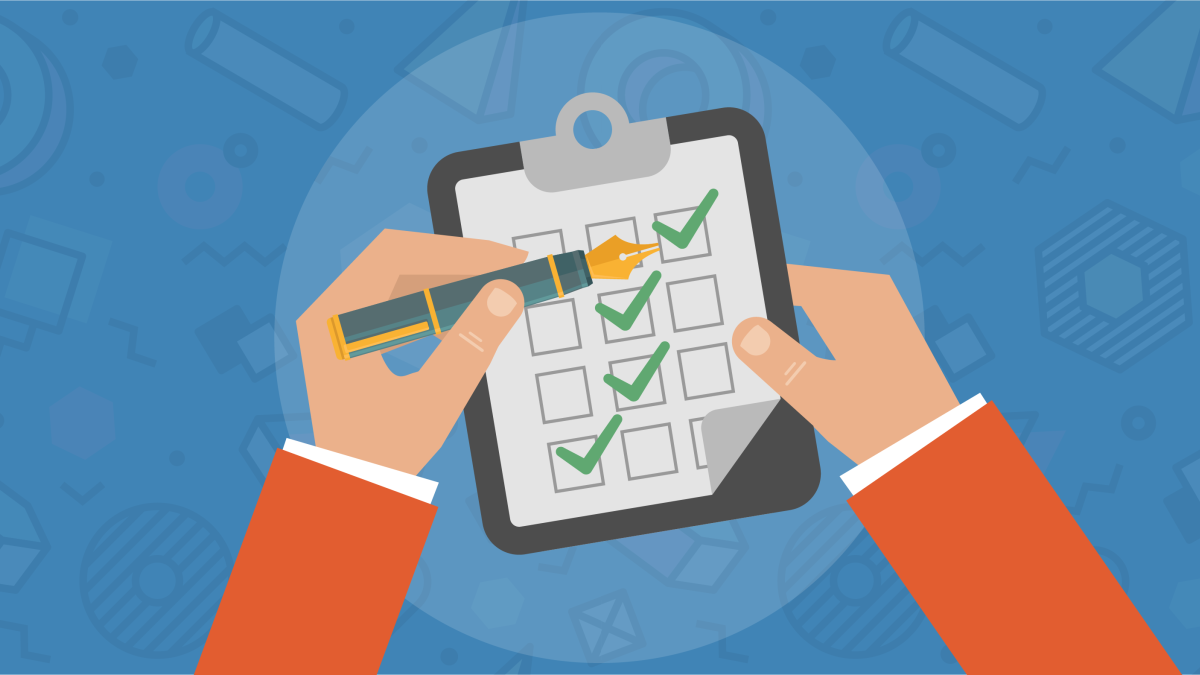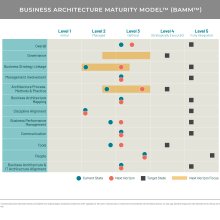Now that we’re inspired about the future of business architecture and architects after the last StraightTalk post, it’s a good time to do a little planning for our own business architecture practice. StraightTalk Post No. 20 here will talk about how to assess the maturity of your practice and plan for its advancement.
Start from the beginning. What is a maturity assessment?
A business architecture maturity assessment measures the progress of an organization’s business architecture practice across various categories, against an objective standard.
It does not measure the maturity of the organization’s capabilities, but rather the key aspects of a business architecture function.
Is there an industry standard for this?
Yep, it’s called the Business Architecture Maturity ModelTM or BAMMTM for short. (P.S. If you just yelled BAM! to yourself, that seems to be a normal reaction.)
Like other maturity models, the BAMMTM includes a set of categories and levels. The categories cover all topics related to business architecture (e.g. knowledgebase, governance and tools), business architects (e.g. training and role) and the practice itself (e.g. executive engagement, communication and integration).
There are five levels of maturity in the BAMM.TM As a practice progresses towards level 5, it becomes more strategic, more embedded into the fabric of the organization, and provides more value.
Just reading through the BAMMTM is a helpful exercise as it will help you to understand what a successful and mature practice looks like.
Who should do the business architecture maturity assessment?
When you’re getting started, it may be beneficial to have an independent third party do the first maturity assessment to help you learn the tool and make sure you get an accurate baseline. From there, you can continue to get third party assessments annually or on a less frequent basis, but regularly enough to make sure your results remain unbiased and aligned with the most recent thought.
Once you have the hang of the maturity assessment, the business architecture team can complete the assessment considering the guidance above. As your practice continues to mature, you can expand the assessment to include the voice of your partners (e.g. IT architects and other teams) and stakeholders (e.g. business leaders).
How do we do the business architecture maturity assessment?
- Step One. Bring the right people together in a conversation and discuss your business architecture practice’s progress category by category. The criteria described in the BAMMTM will help you to determine which level of maturity you are currently at for each category. As your practice matures, you can do more advanced things like collect feedback through a survey.
- Step Two. Document, review and publish the results accordingly.
- Step Three. Repeat each year. A good time to perform the maturity assessment is in the last quarter of the year, so that it can inform the priorities and plans for your business architecture practice in the following year.
Okay, so what do we do with the maturity assessment when it is done?
A few things:
- Share your results – For example, your leader and other stakeholders may be interested to know how the business architecture practice is progressing. Reality check: When you interpret your results, go easy on yourself. Keep in mind that your business architecture practice will always add value, it just adds more value as it becomes more mature. Also, this is a journey and it can take a large organization a number of years to really mature. Reaching even a level 3 maturity in a large organization may take some time and investment.
- Determine what you would like to improve next – For each category, discuss, determine and document both your long-term maturity goal (which may not be a level 5 for everything) and your next horizon maturity goal.
- Create a roadmap to mature your practice over the next horizon – Based on the gaps in each category between your current level of maturity and your next horizon maturity goal, identify the activities you need to perform in order to close each gap. List these activities on a roadmap for the next year or whatever timeframe makes the best sense.
Here’s a diagram to help visualize all of this. Here you can see the BAMMTM categories and levels, as well as a sample assessment of current state, next horizon and long-term maturity levels.
Tell me more about the business architecture practice roadmap.
The roadmap typically includes any activities related to:
- Developing your business architecture knowledgebase
- Establishing and maturing your practice (e.g. defining the business architect role and organizational structure, training, selecting and implementing a tool, establishing governance, integrating with other teams, etc.)
- Planned applications for using business architecture
You can create a high level visual for communication purposes and then create a work plan with more detailed activities, if necessary.
P.S. If you want to refresh on all of the things that go into establishing a practice that you should consider, refer back to Post No. 4.
What is the value of creating the business architecture practice roadmap?
Creating a business architecture practice roadmap is a best practice which:
- Encourages intentional focus and investment for maturing your practice
- Provides you with a way to communicate what you are working on and the resources it will require
- Facilitates sharing and alignment of roadmaps and activities with other teams (e.g. IT architecture, customer experience, etc.)
Makes sense. Anything else?
Whether your organization has a new business architecture practice or a mature one, assessing your business architecture maturity and creating an intentional practice roadmap is always valuable and relevant.
Happy scoring and best of luck on the journey!
More Good Stuff
The Business Architecture Maturity ModelTM (Business Architecture Guild®): You can learn about the Business Architecture Maturity ModelTM (BAMMTM) in Section 3.9 of the BIZBOK® Guide. You can access its content in textual format in Appendix B.3 or in an editable format with scoring by downloading it from the Business Architecture Guild®Store.
The Business Architecture Practice (S2E White Paper): This white paper provides a comprehensive overview of practical approaches to establish and mature your internal business architecture practice.
Business Architecture Practice Talks: Learn from your friends. Here are a few presentations from previous Business Architecture Guild® Innovation Summits where business architecture practitioners shared their practice journeys. (See Business Architecture Guild®Public Resources page.)
- Bending Trends With Business Architecture – Humana (March 2017)
- Using Business Architecture to Build a Better Boeing – Boeing (March 2017)
- Driving Value Through Business Architecture Governance – General Motors (March 2016)

